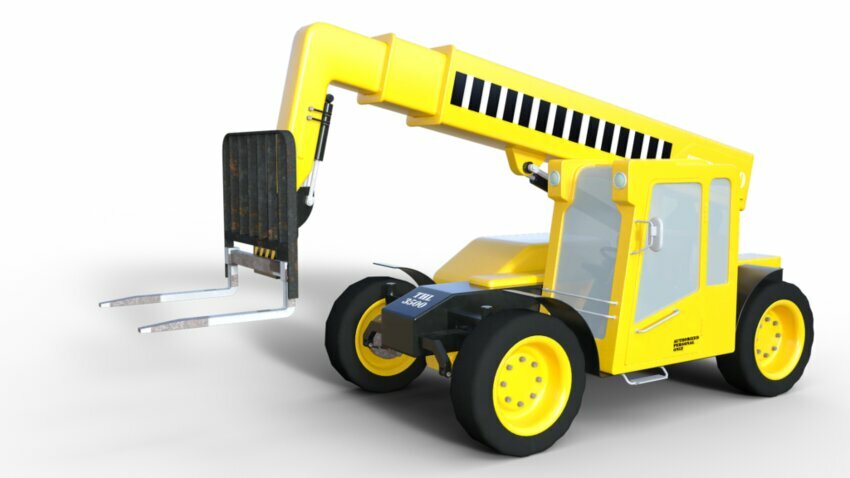 Forklift. Credit: Pixabay
Forklift. Credit: PixabayThe Kion Group is a German multinational that makes materials handling equipment. The Frankfort-based company’s primary products are warehouse automation equipment and industrial forklifts. Its products use energy. Thus, it is keenly aware of the footprint it leaves behind. It has 40,000 employees and does business in 100 countries. As measured by revenues, it is now the world’s second manufacturer of forklifts. It is focused on sustainable manufacturing, saying it affects every aspect of its business.
“We have put special priority on sustainability in our activities: societies, customers, and investors are demanding clear commitments, ambitious targets, and specific results in terms of climate and environmental protection as well as human rights in global supply chains. These demands are increasingly being incorporated into laws and government guidelines as well. Only companies that grow profitably will be able to sustainably support social, economic, and ecological progress,” says Rob Smith, chief executive officer of the company in its 2021 sustainability report.
The German company is part of the European Union, which has climate and energy targets — objectives that each nation must meet to comply with the European green deal. It sets out 6 key goals that companies must be to qualify as environmentally sustainable:
The aim is to design environmentally-friendly products and solutions. Customers expect it. So do shareholders. To that end, the materials that go into logistics equipment must be eco-friendly. For traditionally-fueled equipment, the goal is to reduce emissions. For lithium-ion batteries, the goal is to source raw materials from eco-conscious companies.
The objective is carbon neutrality and to electrify the product portfolio.
Energy and energy efficiency are firmly rooted in the company. It has been pursuing e-trucks that are just as good if not better than those that run on diesel fuel. And the market is buying: electrically-powered trucks made up 87% of the KION Group's sales in 2020. Kion expects this rise to 90% in 2027.
At the same time, Kion has its battery unit that makes lithium-ion batteries. Compared with conventional lead-acid batteries, they offer a host of advantages, such as shorter charging times, a service life that is three to four times longer, and significantly higher energy content and efficiency. It says the efficiency rate of lithium-ion batteries is at least 90 percent, saving customers 30% while reducing their CO2 emissions.
Moreover, Kion wants to offer the most-efficient technologies, including improving the ‘average charging efficiency of vehicles with electric drives.’
Using cleaner energy is one thing. But making better products is another, specifically those that are lighter in weight. That has a positive impact on energy consumption. The company is thus focused on advanced fleet management and forklift guidance systems.
“Sustainability is playing an increasingly important role when it comes to purchasing forklift trucks. More and more decision-makers are therefore willing to invest in a more sustainable energy system," explains Markus Weinberger, International Product Manager Energy Solutions at KION subsidiary Linde Material Handling.
At the same time, Kion is trying to reduce the amount of waste it generates by focusing on its production plants. It also says that the company’s business activities have a minor impact on water usage and quality.
Based on a 2018 analysis, Kion identified climate protection as its top environmental issue. It is a party to the Paris climate agreement and conforms to the Science-Based Target initiative. Its goal at the start was to cut CO2 levels by 30% by 2027; as of 2021, it is 28% of the way there.
“In 2020, a total of 18 initiatives were launched in the KION Group delivering a total annual savings potential of approximately 33,772 t CO2e 5 . Eight of these had already been implemented by the start of 2021, Kion says.
“The company will constantly strive to reduce its CO2 emissions. If reduction measures are exhausted, it will endeavor to substitute energy sources with lower-emission ones. Once this no longer delivers further reductions, the company will then counter the impact of its CO2 emissions through offsetting,” it says.
Right now, it says that Scope 3 emissions tied to its supply chain come mostly from end users that buy its products. Therefore, by making cleaner products, it can reduce those emissions. However, Kion plans to define this scope better in the future.
Burning energy is the primary cause of the company’s greenhouse gases. Thus, reducing its energy usage or replacing dirtier fuels with cleaner ones can reduce the level of those heat-trapping emissions. The transition is also an opportunity to reduce energy-related costs by optimizing buildings, lighting, and heating systems. Using renewable energies instead of coal or natural gas is another way to cut costs and emissions.